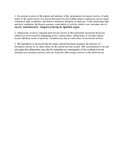| dc.contributor.author | Odhiambo, Thomas R | |
| dc.date.accessioned | 2015-07-27T09:58:42Z | |
| dc.date.available | 2015-07-27T09:58:42Z | |
| dc.date.issued | 1966-08 | |
| dc.identifier.citation | August 1966 J Exp Biol 45, 51-63. | en_US |
| dc.identifier.uri | http://jeb.biologists.org/content/45/1/51.short | |
| dc.identifier.uri | http://hdl.handle.net/11295/88917 | |
| dc.description.abstract | 1. An account is given of the pattern and intensity of the spontaneous locomotor activity of adult males of the desert locust. It is shown that desert locusts exhibit almost continuous activity under continuous light conditions, and almost continuous inactivity in darkness. Under alternating light and dark conditions, the locusts assumes a periodicity of activity which is not circadian since it may be ‘instantaneously’ changed by altering the light/dark régime.
2. Allatectomy of newly emerged adult locusts results in their persistent locomotor inactivity, which may be reversed by implanting active corpora allata. Allatectomy of sexually mature locusts similarly leads to inactivity. Gonadectomy has no such effect on locomotor activity.
3. The hypothesis is advanced that the corpus allatum hormone regulates the intensity of locomotor activity by its direct effect on the central nervous system. The accumulation of fat and glycogen after allatectomy may thus be explained as a consequence of the resulting lowered spontaneous locomotor activity since fat forms the chief energy reserves in the desert locust. | en_US |
| dc.language.iso | en | en_US |
| dc.publisher | University of Nairobi | en_US |
| dc.title | The metabolic effects of the corpus allatum hormone in the male desert locust | en_US |
| dc.type | Article | en_US |
| dc.type.material | en | en_US |

